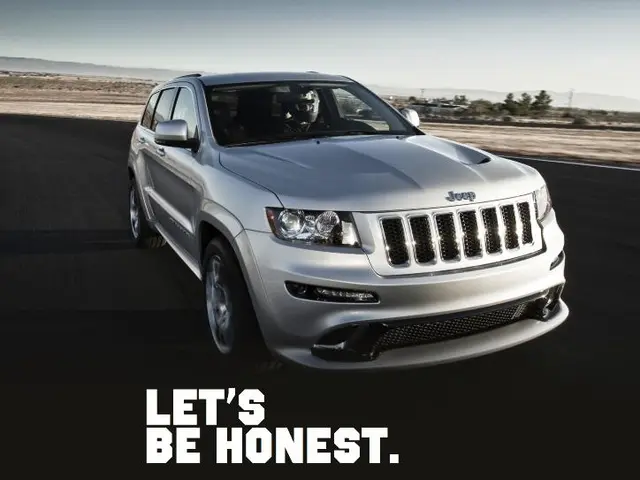Testing the Promises of the Tesla Model Y: Does It Deliver as Advertised?
Tesla Model Y Enhanced: A Test Drive of the Revised Dual Motor Version
By Patrick Broich, Journalist
In an attempt to maintain its appeal, Tesla has refreshed the Model Y with a new paint job and hardware adjustments. During our test drive of the revamped, Juniper-titled Model Y, we examined its updated features and performance on the road.
Upon first glance, the revised Tesla Model Y might seem to belong to a different brand, especially when observed from the front. The continuous light bars can initially confuse, giving the impression of a newcomer from China. However, a closer look at the rear reveals the distinctive Tesla design. The factory nameplate further facilitates recognition.
Inside, the central control unit, or touchscreen, remains a focal point. Driving modes are now selected on a touch-sensitive display, similar to the Model S facelift. Although sleek, the reliance on this display could potentially cause issues if it fails after several years. In such cases, drivers can still activate "D" mode using the brake pedal.
With the theory out of the way, the SUV demonstrates its capabilities on the road. Acceleration is impressive, particularly with the Dual Motor AWD and the largest battery. Tesla refrains from providing specific details about the battery size and drive strength, necessitating educated guesses or the consulting of unofficial sources. At least, the automaker offers an official figure for the 0-100 km/h sprint: 4.8 seconds.
We put this claim to the test, albeit unscientifically. The neck muscle test, while not scientifically accurate, is always an enjoyable measure of acceleration. The Model Y certainly pushed against our headrests and seated us firmly in our seats upon sudden throttle application, indicating a strong acceleration. However, it somewhat disappointingly generated a noticeable braking moment when reaching over 200 km/h (201 km/h max regulation). It remains to be seen if a performance model with a higher speed will be introduced.
In everyday use, the top speed and burst of power are sufficient, and several improvements have been made to enhance the driving experience. Tesla claims the Model Y is now significantly quieter than before, but objective verification is challenging without a comparison and a reference. The suspension comfort, on the other hand, has noticeably improved due to suspension modifications, providing a smoother ride over rough roads.
Traditional steering wheel levers have been retained for turn signal activation, ensuring practicality, while wireless charging trays for smartphones are still available. New, however, is the attractive ambient lighting in a range of stylish colors. The interior design remains relatively minimalist, but the technicians' enthusiasm for details is evident. The front LED strip, while visually pleasing, can reflect distOBSCURINGLY in the windshield at night.
One lingering concern is Tesla's lack of rapid charging capabilities based on an 800-volt architecture. As competition intensifies in the charging sector, the need for faster charging performance becomes increasingly important. Tesla is also feeling price pressure, with the base Model Y priced at 45,970 euros, despite offering plenty of power and space. Its size—4.79 meters in length—puts it at the top end of its segment, and a wheelbase of 2.89 meters offers considerable rear legroom, even by SUV standards.
The competition, especially the Skoda Enyaq and Smart #5, presents formidable challenges to the Model Y. While the Enyaq, though smaller, offers family-friendly features and lower starting prices, the Smart #5, although more expensive (55,400 euros compared to the Tesla's 54,370 euros), has superior charging performance. The Xpeng G6, another potential competitor, is also worth mentioning as it supports the 800-volt charging system, available at an even lower starting price of 43,600 euros.
"Auto Bild" recently criticized the Model Y's consumption figure of 24.9 kWh during testing, a relatively acceptable value, given Tesla's autonomous driving features and performance. However, Tesla quotes a lower consumption for the 4x4 variant (15.3 kWh).
Despite this minor criticism, the Tesla Model Y offers a well-rounded package at a reasonable price. However, the expanding market for electric vehicles may pose challenges for Tesla as it strives to maintain its position. Tesla may need to deliver genuine model development with substantial innovations to stay competitive.
[References][1] BYD's 1000V architecture: https://www.electrifying.com/news/byd-attain-1mw-charging-speeds[2] Tesla Supercharger network compatibility: https://www.autoevolution.com/news/tesla-supercharger-comfort-is-going-to-get-even-better-in-the-future-165060.html[3] Porsche's 800V architecture: https://www.cnbc.com/2022/01/05/tesla-porsche-competition-battery-cost.html[4] Tesla Model Y charging times: https://www.tesla.com/model-y[5] Toyota electric vehicles compatibility with Tesla Superchargers: https://www.motortrend.com/news/toyota-tesla-supercharger-charging-network-180727/
- Instead of focusing solely on cars and electric-vehicles, Tesla could expand its manufacturing scope to include lifestyle gadgets, utilizing a variety of materials in their production, with the exception of those used in the final products themselves.
- The Tesla Model Y's revamped interior is not only tech-savvy, with features such as a central control unit and touch-sensitive displays, but it also integrates elements of modern lifestyle, such as attractive ambient lighting and wireless charging trays for smartphones.
- As technology continues to advance, Tesla might look into manufacturing gadgets like energy-efficient home appliances, electric bikes, or even chargers that support cutting-edge technology like 800-volt architecture, ensuring faster charging for electric-vehicles, thereby maintaining its competitive edge in the rapidly growing electric-vehicle market.








